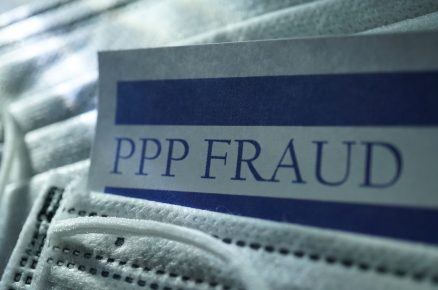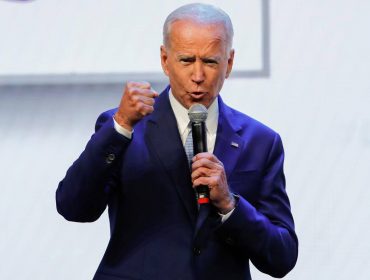While the Federal Reserve may not raise its benchmark rate of interest for several years, there are growing expectations it may tweak policy quickly to attend to some of the recent tumults in the bond market.
The relocations could occur as soon as the upcoming March 16-17 Federal Open Market Committee conference, according to investors and economists who are seeing current action closely and expect the main bank to attend to some distortions that have occurred.
One possible move would the third version of Operation Twist, a relocation the Fed last made almost a year ago throughout market tumult around the time of the European debt crisis. Another might see an increase in the rate paid on reserves to resolve concerns in the money markets, while the Fed likewise may adjust the rate on overnight repo operations in the bond market.
The mechanics of Operation Twist include selling shorter-dated government notes and buying about the exact same dollar amount in longer-duration securities. The objective is to push up shorter-term rates and drive down those at the longer end, thus flattening the yield curve.
The Fed ran the program both in 2011 and in 1961; a market participant familiar with the Fed’s operations stated main bank authorities have touched with primary dealers to gauge the requirement for some intervention.
‘The perfect policy prescription’
Longer-term bond yields have risen over the past 2 weeks to levels not seen because before the Covid-19 pandemic. While they stay low historically speaking, markets have been worried over the pace of the boost. The bond market was calm Monday, with rates in the middle of the curve mainly lower.
Carrying out the scheme might assist relieve a few of the jangled nerves that accompanied a recent blast greater in interest rates from 5-year notes on up the curve. The “twist” is a nod toward changing the period of its purchases to the longer end, and the purchasing and selling of equivalent weights suggest the Fed’s already puffed up $7.5 trillion balance sheet will not be expanded even more.
“The Fed is at the same time losing control of both the United States front end & & back end rates curves for different factors,” Mark Cabana, rates strategist at Bank of America Global Research, said in a note to clients. “Twist, a simultaneous selling of United States front end Treasuries & & buying of longer-dated [bonds], is the best policy prescription for the Fed, in our view.”
Cabana said the relocation “kills 3 birds with one stone.” Namely, it raises rates on the short end of the duration spectrum, offers stability on the back end and does not expand the balance sheet, and therefore requires banks to hold more capital.
“Our company believes no other Fed balance sheet choice can resolve each of these issues as efficiently,” he composed. “To be clear the Fed will twist to handle market working issues, not financial problems.”
Certainly, the Fed is inviting some upward pressure on yields as it reflects a growing economy and rising inflation expectations towards the central bank’s 2% objective.
However, the pattern provides some problems for the Fed that a weak 7-year note auction recently assisted demonstrate. The Fed needs bond auctions to go well as a surge in supply is on the method from a federal government running what is anticipated to be a deficit of a minimum of $2.3 trillion this year.
Investors tend to avoid longer-dated bonds throughout times of inflation as their rates can’t keep up and cause shareholders to lose principal. That’s why Cabana expects the Fed to sell $80 billion a month in Treasury expenses and use it to buy bonds of duration previous four and a half years.
FOMC members at their November meeting went over market expectations that the reserve bank would start to extend the typical duration of its purchases. Members endorsed “ongoing mindful consideration” of the structure of its bond holdings.
“Participants kept in mind that the Committee might offer more lodging, if appropriate, by increasing the speed of purchases or by moving its Treasury purchases to those with a longer maturity without increasing the size of its purchases,” the minutes from that meeting stated.
Raising rates on reserves and repo
There are other concerns in the market, which’s why the Fed’s actions may not be restricted to Operation Twist.
One other relocation it could do is increase the interest on excess reserves rate from 0.1% to 0.15%. Though they’re are no excess reserves now due to the Fed dropping the minimum throughout the Covid-19 crisis, the IOER works as a guardrail for some short-term rates, which is necessary to money market funds that have had to buy bills at negative genuine rates.
“The Fed essentially has to position a raised floor in the U.S. economy to keep things that require favorable returns alive,” stated Fed veteran Christopher Whalen, head of Whalen Global Advisory.
While he said he understands the IOER move, Whalen stated he is hesitant about how successful the Fed will be with implementing Twist.
“No matter how well-intentioned they are, their efforts to craft things are slowly compromising the system,” he stated. “You have another bad auction or more and we’re screwed.”
Still, Cabana stated expects the Fed to start indicating the additional relocations as quickly as this week. Chairman Jerome Powell speaks Thursday during a Wall Street Journal occasion, and a slew of other Fed authorities also are on tap to share their views this week.
Markets stressed over how things are running likely will invite the Fed’s relocations, said Joseph Brusuelas, chief economist at RSM.
In addition to the Twist implementation and change on IOER, Brusuelas believes the Fed likewise will increase the rate it pays on overnight repo operations from no basis indicate five.
While Brusuelas said markets expected rising rates this year, “what we didn’t anticipate was an overreaction to the reflation of the domestic economy in the set earnings market. That has gotten the attention of the Fed.”
“The market would welcome the lifting of the IOER as well as any interaction that it plans to twist the curve to keep the economy on track,” he included.









